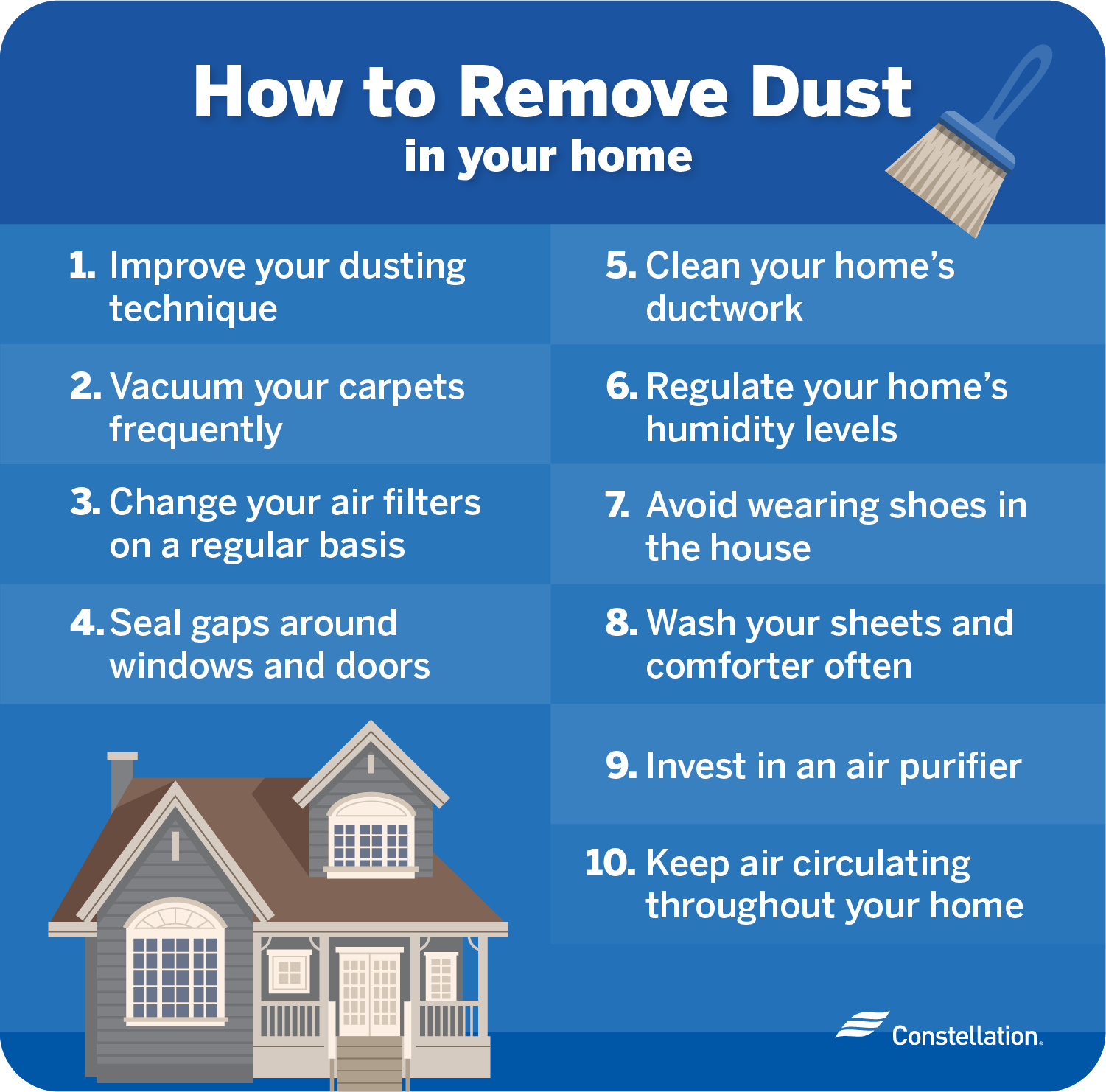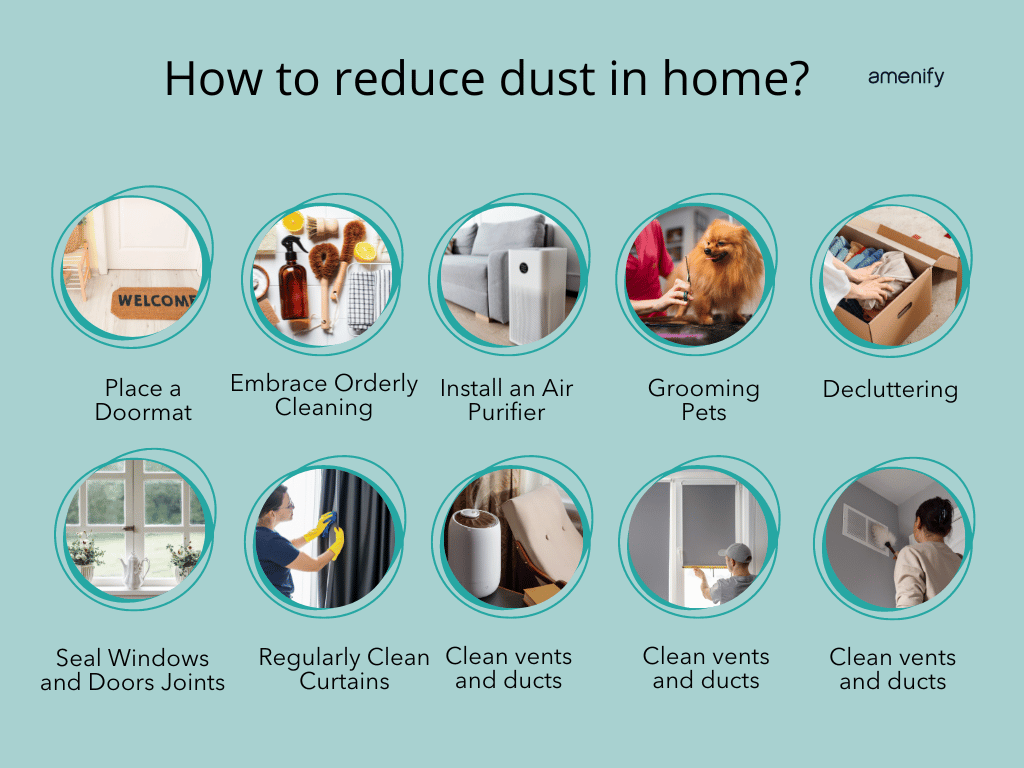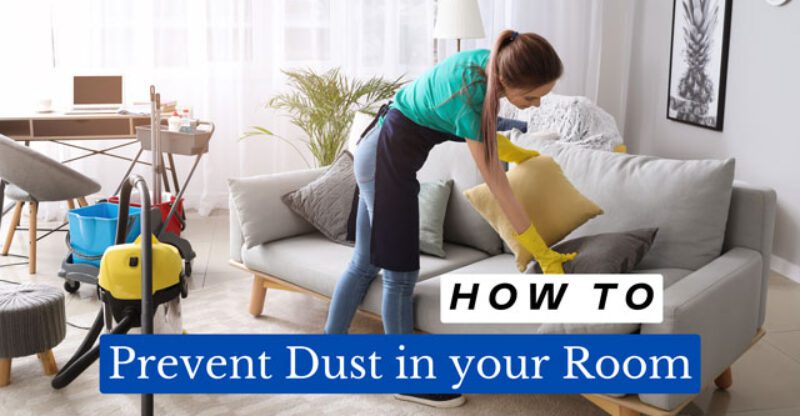How To Get Less Dust In Your Room

Sunlight streams through the window, illuminating not just the cheerful decor of your room, but also...dust. Those tiny, swirling particles dance in the golden rays, a miniature snowstorm confined within your four walls. It's a sight familiar to anyone who's ever wielded a duster, a constant battle against an unseen enemy. But what if there was a way to wage a more effective war, a way to reclaim your living space from the tyranny of dust?
Tired of constantly battling dust bunnies? This article will provide a practical guide to minimizing dust accumulation in your room, offering actionable strategies and preventative measures. We'll delve into the sources of dust, effective cleaning techniques, and smart lifestyle adjustments that can significantly reduce the amount of airborne particles in your home.
Understanding Your Enemy: What is Dust?
Dust isn't just dirt. It's a complex mixture of various particles, a veritable ecosystem on a microscopic scale. According to the Environmental Protection Agency (EPA), indoor dust can contain everything from dead skin cells and pet dander to pollen, mold spores, textile fibers, and even insect droppings.
The composition of dust varies depending on your location, lifestyle, and the materials present in your home. Homes with pets, for example, will likely have a higher concentration of pet dander.
Similarly, older homes may contain lead dust from paint, posing a health risk, especially to children.
The Impact of Dust: More Than Just an Annoyance
While dust is undeniably unsightly, its impact extends beyond mere aesthetics. For many, dust is a significant allergen, triggering symptoms like sneezing, coughing, itchy eyes, and a runny nose.
Dust mites, microscopic creatures that thrive in dust, are a major culprit for allergy sufferers. These tiny organisms feed on dead skin cells and their waste products are potent allergens.
Moreover, dust can exacerbate respiratory conditions like asthma. In severe cases, prolonged exposure to high levels of dust can even contribute to the development of respiratory problems.
Strategic Cleaning: A Dust-Busting Arsenal
Regular and effective cleaning is the cornerstone of dust control. However, not all cleaning methods are created equal. Traditional dusting with a dry cloth can simply redistribute dust, sending it airborne to settle elsewhere.
Microfiber cloths are your secret weapon. Their unique weave traps dust particles instead of just pushing them around. Dampening the cloth slightly can further enhance its dust-attracting properties.
Vacuuming is another essential tool. Choose a vacuum cleaner with a HEPA (High-Efficiency Particulate Air) filter. According to the American Lung Association, HEPA filters can trap 99.97% of particles as small as 0.3 microns, effectively removing dust, pollen, and other allergens from the air.
Top-Down Approach: Conquer the High Ground
Always start your cleaning from the top of the room and work your way down. This prevents dust from falling onto already cleaned surfaces.
Begin by dusting ceiling fans, light fixtures, and the tops of furniture. Use an extension duster to reach high areas without straining.
Pay attention to areas that tend to accumulate dust, such as window sills, baseboards, and corners. A crevice tool attachment on your vacuum can be helpful for these hard-to-reach spots.
Floor Care: A Solid Foundation
The type of flooring in your room significantly impacts dust accumulation. Hard floors, like wood or tile, are generally easier to keep dust-free than carpets.
Vacuum hard floors regularly with a soft brush attachment to avoid scratching. For carpets, vacuum at least once a week, and more frequently in high-traffic areas.
Consider using area rugs on hard floors to add warmth and reduce noise, but be sure to clean them regularly. Shake them outside to remove loose dust and vacuum them thoroughly.
Beyond Cleaning: Preventative Measures
While cleaning is crucial, preventative measures can significantly reduce the amount of dust that enters your room in the first place. Sealing cracks and crevices in windows and doors can help prevent dust from blowing in from outside.
Consider using weather stripping around doors and caulk around windows to create a tighter seal. Replacing old or damaged weather stripping can make a noticeable difference.
Air purifiers can also play a vital role in dust control. Look for an air purifier with a HEPA filter to capture airborne particles. According to the EPA, portable air cleaners with HEPA filters can effectively remove dust, pollen, and other allergens from indoor air.
Declutter Your Space: Less is More
Clutter acts as a dust magnet. The more items you have in your room, the more surfaces dust can accumulate on.
Regularly declutter your space, getting rid of items you no longer need or use. Store items in closed containers to prevent dust from settling on them.
Consider minimizing the number of decorative items on shelves and tables. The fewer items you have to dust, the less time you'll spend cleaning.
Fabric Matters: Choosing the Right Materials
Certain fabrics tend to attract and hold more dust than others. Heavy drapes and upholstered furniture can be significant sources of dust.
Consider replacing heavy drapes with lightweight curtains or blinds that are easier to clean. Choose furniture with smooth, non-porous surfaces that are less likely to trap dust.
Wash bedding regularly in hot water to kill dust mites and remove allergens. The Mayo Clinic recommends washing bedding at least once a week.
Lifestyle Adjustments: Small Changes, Big Impact
Simple lifestyle adjustments can also contribute to a dust-free environment. Remove shoes at the door to prevent tracking in dirt and dust from outside.
Groom pets regularly to reduce shedding and dander. Brushing your pet outdoors is ideal.
Change your HVAC filters regularly. The U.S. Department of Energy recommends changing filters every one to three months, depending on the type of filter and the air quality in your area.
Maintaining a Dust-Free Sanctuary: A Long-Term Commitment
Achieving a dust-free room is an ongoing process, not a one-time fix. Consistent cleaning and preventative measures are essential for maintaining a healthy and comfortable living space.
By understanding the sources of dust, adopting effective cleaning techniques, and making smart lifestyle adjustments, you can significantly reduce the amount of dust in your room.
So, take a deep breath, armed with your microfiber cloth and HEPA-filtered vacuum. Your dust-free sanctuary awaits, a haven of clean air and peaceful living. The fight against dust may be constant, but with the right knowledge and tools, it's a battle you can win.




.png?format=1000w)













